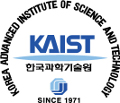A team of researchers led by Park Yong-keun, a professor in the Physics Department at the Korea Advanced Institute of Science and Technology (KAIST) (Daejeon, Republic of Korea), has announced the achievement of a significant performance improvement in dynamic holographic display technology.
A recent publication by the team is entitled “Ultrahigh-definition dynamic 3D holographic display by active control of volume speckle fields.” These results were published in the January 24th online edition of “Nature Photonics.” A copy of the article is available for purchase here.
To create a hologram, the wavefront of light must be controlled using a wavefront modulator such as liquid crystal based spatial light modulator. Although the number of pixels in a high resolution liquid crystal display is more than enough for presentation of a high quality 2D image, the information contained in this number of pixels is insufficient in a spatial light modulator used to produce holographic images. Due to this limitation, the best holographic image that can be produced using existing liquid crystal based spatial light modulator technology has a size of about 1 x 1 x 1 cm and a viewing angle of about 3 degrees. Clearly such a display has a long way to go before becoming in any way useful.
As an alternative to a spatial light modulator, the KAIST researchers investigated the use of a deformable mirror. In addition, two successive, translucent ground glass diffusers were added to the optical system to scatter light. Although scattering light in many directions was indeed found to produce a wider viewing angle and a larger image size, it also resulted in a volume speckle field. A speckle field is caused by the interference of multiple scattered light and cannot be used to display a holographic image.
To address this issue, the researchers employed a wavefront shaping technique to control the field. This consisted of a high numerical aperture imaging unit mounted on a three axis motorized translational system. An illustration of the KAIST optical set up is presented in the figure below.
The researchers reported that the holographic image produced using the new technique had a volume of 2 x 2 x 2 cm and a viewing angle of 35 degrees.
The researchers concluded that the use of the scattering technique produced a performance that was “about 2,600 times stronger than the original image definition generated when they used a deformable mirror without a diffuser.” The new scattering technique may offer further improvements in dynamic holographic display technology. -Arthur Berman
KAIST, YongKeun Park, +82-42-350-2514, [email protected]

